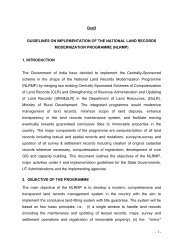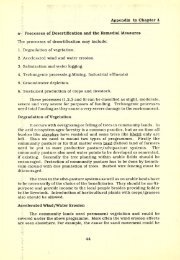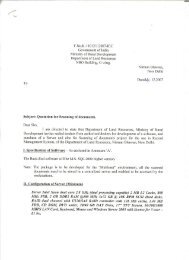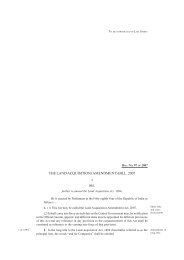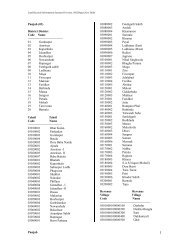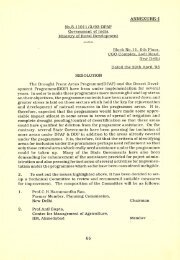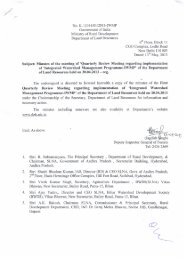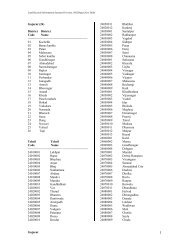Uttarakhand - Department of Land Resources
Uttarakhand - Department of Land Resources
Uttarakhand - Department of Land Resources
Create successful ePaper yourself
Turn your PDF publications into a flip-book with our unique Google optimized e-Paper software.
nation. The Terms <strong>of</strong> reference <strong>of</strong> the 13th Finance Commission states that in making<br />
its recommendations, the Commission should consider "the need to manage ecology,<br />
environment and climate change consistent with sustainable development."<br />
It is essential to regenerate degraded forest and wastelands. A large area <strong>of</strong> degraded<br />
land in the state can be reclaimed as most <strong>of</strong> the land needs only basic water and soil<br />
conservation measures and some amount <strong>of</strong> plantation and protective work. Agr<strong>of</strong>orestry<br />
can play an immensely important role in the rural economy. The wasteland can<br />
be converted to grow plants, fodder and fuel. All the hill districts have more than 60 per<br />
cent <strong>of</strong> the area under forest. Thus, many <strong>of</strong> the livelihood options in these regions<br />
depend on forest-based products. The maximum pasture and grazing land is in<br />
Bageshwar, Champawat and Pithoragarh; this is crucial for better fodder availability for<br />
livestock in these districts. Champawat also has large tracts <strong>of</strong> fallow land due to<br />
poverty, lack <strong>of</strong> water and the un-remunerative nature <strong>of</strong> farming.<br />
LIVESTOCK<br />
<strong>Uttarakhand</strong> has a mix <strong>of</strong> almost all domesticated species <strong>of</strong> livestock, very large in<br />
numbers and very low in productivity, across the board. In economic terms they are a<br />
wealth indeed, low productivity not-withstanding, as the sector supports livelihoods <strong>of</strong><br />
nearly 80 per cent <strong>of</strong> the rural households in the state, at least in part in the majority <strong>of</strong><br />
cases and in full in some (tribals and nomads exclusively living <strong>of</strong>f livestock).<br />
Livestock production in <strong>Uttarakhand</strong> is the endeavour <strong>of</strong> the small holder (marginal,<br />
small and landless) and takes place in millions <strong>of</strong> small and tiny holdings scattered<br />
across the state. The predominant farming system is mixed crop-livestock farming, both<br />
in the plains as well as the hills, irrigated in the plains and rain fed in the hills.<br />
Individual livestock holdings are small (5 or 6 animals), <strong>of</strong>ten made up <strong>of</strong> a mix <strong>of</strong><br />
different species, the combination made up invariably <strong>of</strong> cattle and or buffalo and goat.<br />
Cattle are the most popular species and are farmed for milk production in the plains<br />
(commercial); and in the hills for work animal production as well as for milk for home<br />
32





